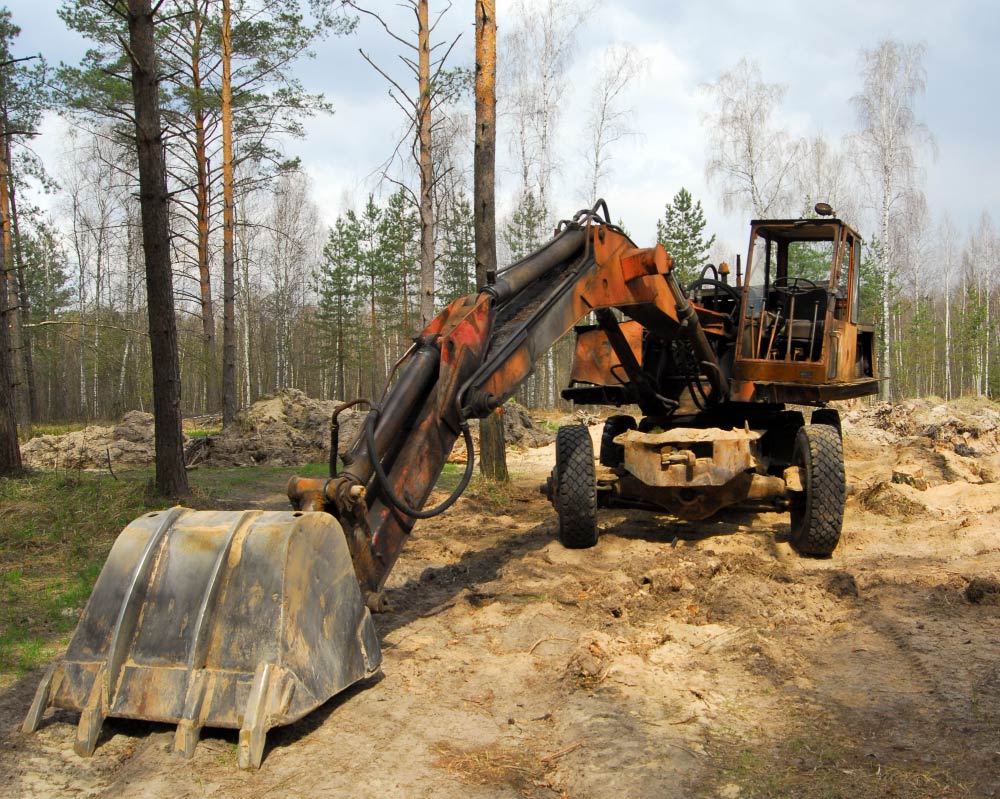Pipeline right-of-way (ROW) maintenance is a critical task to ensure the safety, accessibility and operational reliability of energy infrastructure. Overgrown vegetation, fallen trees and encroaching brush can obstruct access for inspections, emergency repairs and routine servicing. Heavy-duty mulchers have become the preferred choice for efficient and environmentally conscious ROW clearing, offering a fast and precise method to remove vegetation while minimising soil disturbance and environmental impact.
Clearing pipeline ROWs is not only about vegetation control. It also involves strict adherence to safety regulations, protection of nearby habitats and coordination with utility operators to maintain uninterrupted energy delivery. Heavy-duty mulching equipment, such as skid steer mulchers, hydraulic attachments and dedicated tracked carriers, combines robust performance with the versatility needed to operate across varying terrain and environmental conditions.

Pipeline corridors often extend for hundreds, and sometimes thousands, of kilometres, crossing diverse landscapes that range from forested hillsides to open plains and wetlands. Each section presents its own operational challenges, from dense vegetation and hard-to-reach slopes to soil types that require careful handling.
In such a complex environment, the choice of clearing technology plays a decisive role. Heavy-duty mulchers provide a balance between productivity, worker safety and environmental responsibility, allowing teams to manage vegetation without the repeated passes or disruptive ground disturbance associated with traditional clearing methods.
Heavy-duty mulchers are engineered to cut and shred trees, brush and undergrowth into fine, even mulch in a single pass, streamlining the entire clearing process. By eliminating the need to transport debris offsite, they reduce not only handling time but also truck traffic, fuel use and logistical complexity.
In areas where ecological sensitivity is a priority, such as wetlands, designated wildlife habitats or corridors with unstable or sandy soil, mulching in place offers clear advantages. The process leaves root systems intact, helping to stabilise the soil and reduce erosion, while returning organic material to the ground to support natural regeneration.
This approach allows maintenance work to proceed without causing long-term damage to the surrounding ecosystem.
The capability of heavy-duty mulchers to process thick vegetation rapidly means crews spend far less time working in potentially dangerous conditions. This is particularly valuable in zones where slopes are steep, access is restricted or proximity to live pipelines requires extra caution.
By reducing the overall project timeline, these machines help to limit exposure to hazards such as uneven terrain, extreme weather or wildlife encounters. At the same time, the efficiency of a single-pass operation lowers labour hours, fuel consumption and mechanical strain on secondary equipment like loaders or trucks.
Over the lifecycle of a pipeline corridor maintenance plan, this translates into measurable savings while ensuring that work remains fully compliant with industry safety regulations and environmental guidelines.
Efficient right-of-way (ROW) clearing for pipelines demands more than simply removing vegetation. It requires a well-structured workflow, purpose-built equipment, and meticulous coordination with regulatory frameworks and environmental protection measures.
Each stage; from site preparation to post-operation review, is critical to ensuring that pipelines remain accessible, safe, and compliant over the long term.
Before the first piece of equipment is deployed, the success of pipeline right-of-way clearing depends on a meticulous site assessment.
This preparatory phase allows project managers to anticipate potential challenges, optimise equipment selection, and ensure compliance with environmental and safety regulations.
An in-depth survey provides the data needed to make informed operational decisions, reducing the likelihood of costly delays or mid-project adjustments.
The evaluation typically covers the following aspects:
Completing this preparatory work ensures that the clearing process proceeds in an orderly and compliant manner, with minimal environmental impact and maximum operational efficiency. It also provides a clear framework for on-site crews, helping them execute the job safely and effectively from day one.
Clearing operations typically progress in a planned sequence designed to maximise efficiency and minimise disruption. Crews begin by addressing the densest or most hazardous vegetation, often in hard-to-reach areas or where visibility is limited.
This is followed by systematic clearing toward areas with lighter growth, allowing operators to work in safer, more controlled conditions as the job advances. Safety remains the top priority, with pre-shift hazard assessments, proper PPE for every team member, and continuous radio or hands-free communication between operators and ground crews.
Given the proximity to live pipeline structures, operators maintain precise control over equipment positioning, while ground pressure and vibration levels are monitored to prevent unintended stress on the infrastructure.
Once the clearing work is complete, the site undergoes a detailed inspection to confirm that the ROW meets required accessibility and operational standards.
Any debris that could hinder maintenance access is removed, and soil stabilisation measures, such as seeding or erosion control mats, are implemented where needed.
Compliance reports consolidate all findings, noting adherence to environmental permits, confirming completion of any mandated replanting, and recording soil or vegetation management efforts.
All data, including GPS-tracked operation logs and photographic records, is archived to create a verifiable audit trail. This not only supports regulatory transparency but also informs future maintenance schedules and budget planning.
Heavy-duty mulching offers a vegetation management technique that balances effectiveness with environmental responsibility, making it especially suited for pipeline right-of-way (ROW) maintenance.
By shredding trees, shrubs and undergrowth into a fine, nutrient-rich mulch, this method not only clears the corridor but also returns organic material directly to the soil. This natural recycling process fosters soil health and reduces the frequency and intensity of future clearing needs, aligning operational goals with ecological stewardship.
Compared to traditional removal or herbicide treatments, intensive mulching minimises environmental disruption while supporting long-term corridor stability.

A well-managed pipeline corridor is not just about keeping vegetation under control, it is also about protecting the ground that supports both the pipeline and the surrounding ecosystem. The even layer of mulch left after heavy-duty mulching plays a central role in this balance, delivering multiple ecological and operational benefits in one step.
One of the most significant advantages is improved soil moisture retention. By shielding the ground from direct sun and wind exposure, the mulch slows evaporation, helping the soil retain water for longer periods. This is especially valuable in dry climates and erosion-prone zones, where maintaining adequate soil moisture can mean the difference between a thriving habitat and a degraded landscape.
The mulch layer also provides a physical shield against erosion. It cushions the impact of rainfall, prevents loose soil from washing away, and helps stabilise slopes or embankments near the pipeline. On terrain with a high erosion risk, such as areas bordering rivers or steep gradients, this stability is critical to preventing landslides, sediment runoff, or infrastructure damage that could jeopardise the integrity of the pipeline.
Beyond soil protection, mulching fosters a healthier ecosystem by creating optimal conditions for native plants to regenerate naturally. The organic layer moderates soil temperature, enriches it with nutrients as it decomposes, and limits light penetration to weed seeds. This discourages invasive species from establishing themselves while allowing native flora to reclaim cleared zones. The result is a corridor that remains both ecologically balanced and visually integrated into its surroundings, without the need for intensive replanting programs.
In addition to its environmental benefits, heavy-duty mulching offers substantial long-term economic value. The organic mulch left behind after clearing acts as a natural growth suppressant, slowing the return of dense vegetation that would otherwise require repeated interventions. Over time, this translates into fewer disruptions, lower resource use, and a more efficient vegetation management plan.
Key cost-saving advantages:
These benefits compound over the lifespan of a pipeline, making heavy-duty mulching not just a short-term vegetation control solution, but a strategic investment in the long-term health and efficiency of the corridor. By reducing the frequency of maintenance cycles and minimising environmental impact, operators can maintain compliance, extend asset life, and protect surrounding ecosystems, all while controlling operational expenses.

Safety is a non-negotiable aspect of pipeline right-of-way clearing, particularly due to the inherent risks posed by proximity to high-pressure pipelines, the potential presence of hazardous materials, and challenging or varied terrain conditions.
Managing these risks proactively is essential not only to protect workers and the public but also to prevent environmental damage and avoid costly service interruptions.
A well-structured safety program ensures that operations proceed smoothly, meeting regulatory requirements and upholding the integrity of pipeline infrastructure throughout its lifespan.
Heavy-duty mulchers used in pipeline projects must be operated with precision and caution, given their proximity to sensitive underground infrastructure. Any contact with the pipeline or associated facilities could cause significant damage or endanger lives. This is why strict adherence to safety procedures is fundamental.
Key on-site safety measures:
Beyond equipment and procedures, operator competence is critical. Heavy-duty mulcher operators should complete advanced training and certification programs that cover hazard awareness, pipeline right-of-way protocols, emergency shutdown procedures, and proper machine handling in sensitive zones. Skilled operators not only improve jobsite safety but also maintain productivity, keeping clearing schedules on track without sacrificing caution.
Pipeline vegetation management is regulated by a complex network of environmental laws, safety codes, and industry-specific guidelines. In North America, these may include standards set by the American Petroleum Institute (API), federal and state environmental agencies, and local hazardous materials regulations.
Compliance involves far more than paperwork, it shapes how, where, and when clearing can occur. This includes:
Partnering with contractors who have proven experience in regulatory compliance ensures smoother project approvals, fewer operational interruptions, and reduced risk of costly fines. More importantly, it reinforces the operator’s commitment to environmental stewardship, community safety, and the long-term operational security of the pipeline.
For reliable, efficient and fully compliant pipeline right-of-way clearing, trust heavy-duty mulching solutions tailored to your project’s specific needs.
Contact our experts today to discuss how our advanced equipment and experienced operators can help you maintain safe, sustainable and cost-effective pipeline corridors.
To provide the best experiences, we use technologies such as cookies to store and/or access device information. Consenting to these technologies will allow us to process data such as browsing behavior or unique IDs on this site. Failure to consent or withdrawing consent may adversely affect certain features and functions.